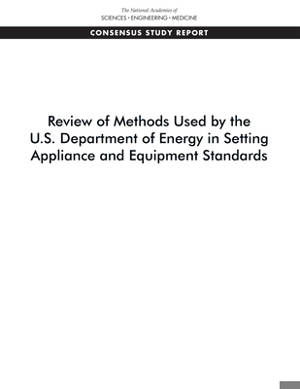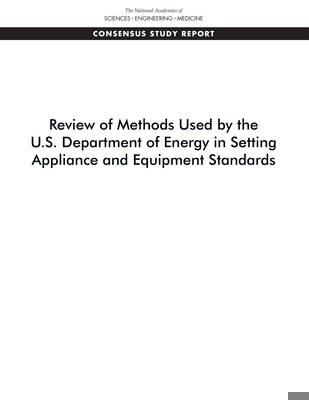
- Retrait gratuit dans votre magasin Club
- 7.000.000 titres dans notre catalogue
- Payer en toute sécurité
- Toujours un magasin près de chez vous
- Retrait gratuit dans votre magasin Club
- 7.000.0000 titres dans notre catalogue
- Payer en toute sécurité
- Toujours un magasin près de chez vous
Review of Methods Used by the U.S. Department of Energy in Setting Appliance and Equipment Standards
National Academies of Sciences Engineering and Medicine, Division on Engineering and Physical Sciences, Board on Infrastructure and the Constructed Environment, Committee on Review of Methods for Setting Building and Equipment Performance StandardsDescription
The U.S. Department of Energy (DOE) issues standards regulations for energy conservation pursuant to the Energy Policy and Conservation Act of 1975, as amended, and other authorities. These standards regulations apply to certain consumer products and commercial and industrial equipment. These can include air conditioning and heating systems, washing machines, and commercial refrigeration, among numerous other examples. DOE issues standards regulations by rulemaking and includes quantitative maximum water and energy use or minimum energy conservation standards. There are currently standards regulations for more than 70 product classes (i.e., a specific type of consumer product or commercial or industrial equipment). This report reviews the assumptions, models, and methodologies that DOE uses in setting the quantitative portion of the standards regulations following the Office of Management and Budget's guidance on the use of scientific information. Review of Methods Used by the U.S. Department of Energy in Setting Appliance and Equipment Standards makes findings and recommendations on how DOE can improve its analyses and align its regulatory analyses with best practices for cost-benefit analysis.
Spécifications
Parties prenantes
- Auteur(s) :
- Editeur:
Contenu
- Nombre de pages :
- 142
- Langue:
- Anglais
Caractéristiques
- EAN:
- 9780309685450
- Date de parution :
- 28-01-22
- Format:
- Livre broché
- Format numérique:
- Trade paperback (VS)
- Dimensions :
- 213 mm x 279 mm
- Poids :
- 430 g

Les avis
Nous publions uniquement les avis qui respectent les conditions requises. Consultez nos conditions pour les avis.






